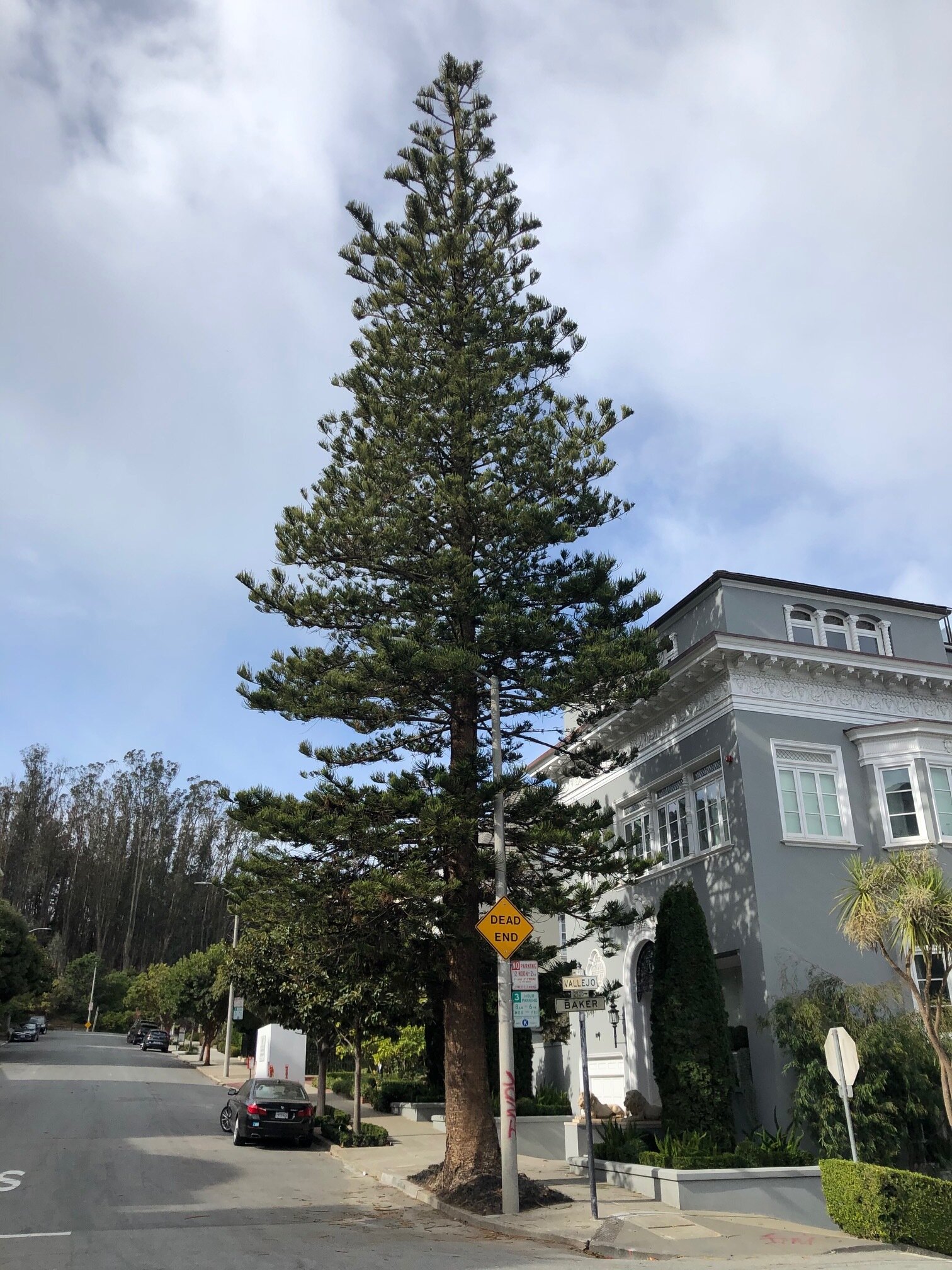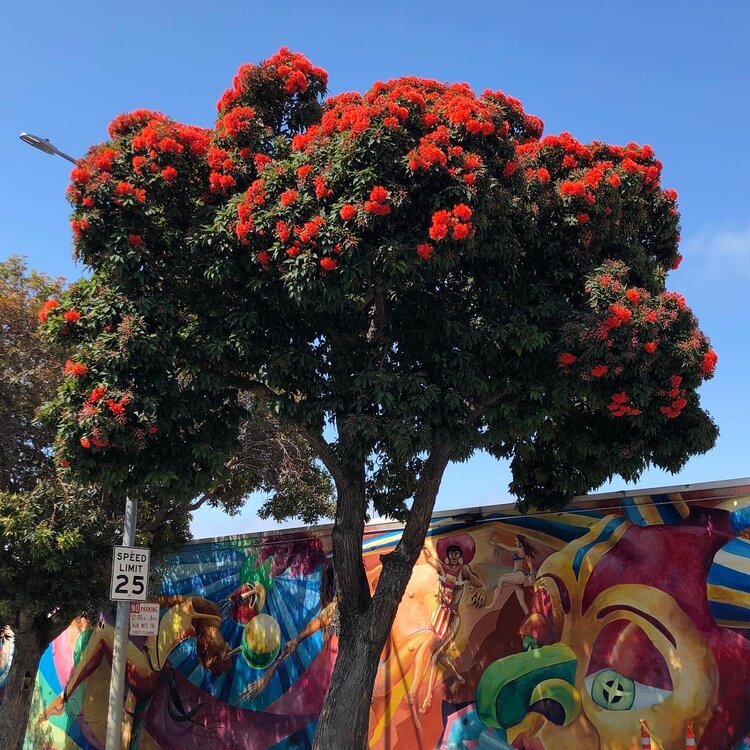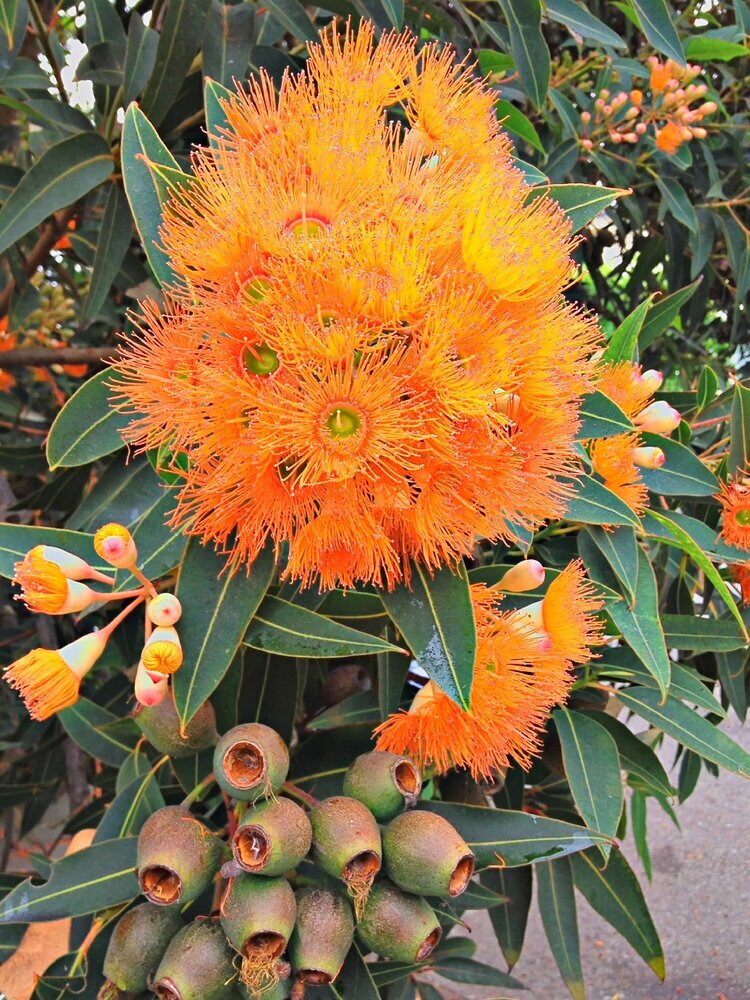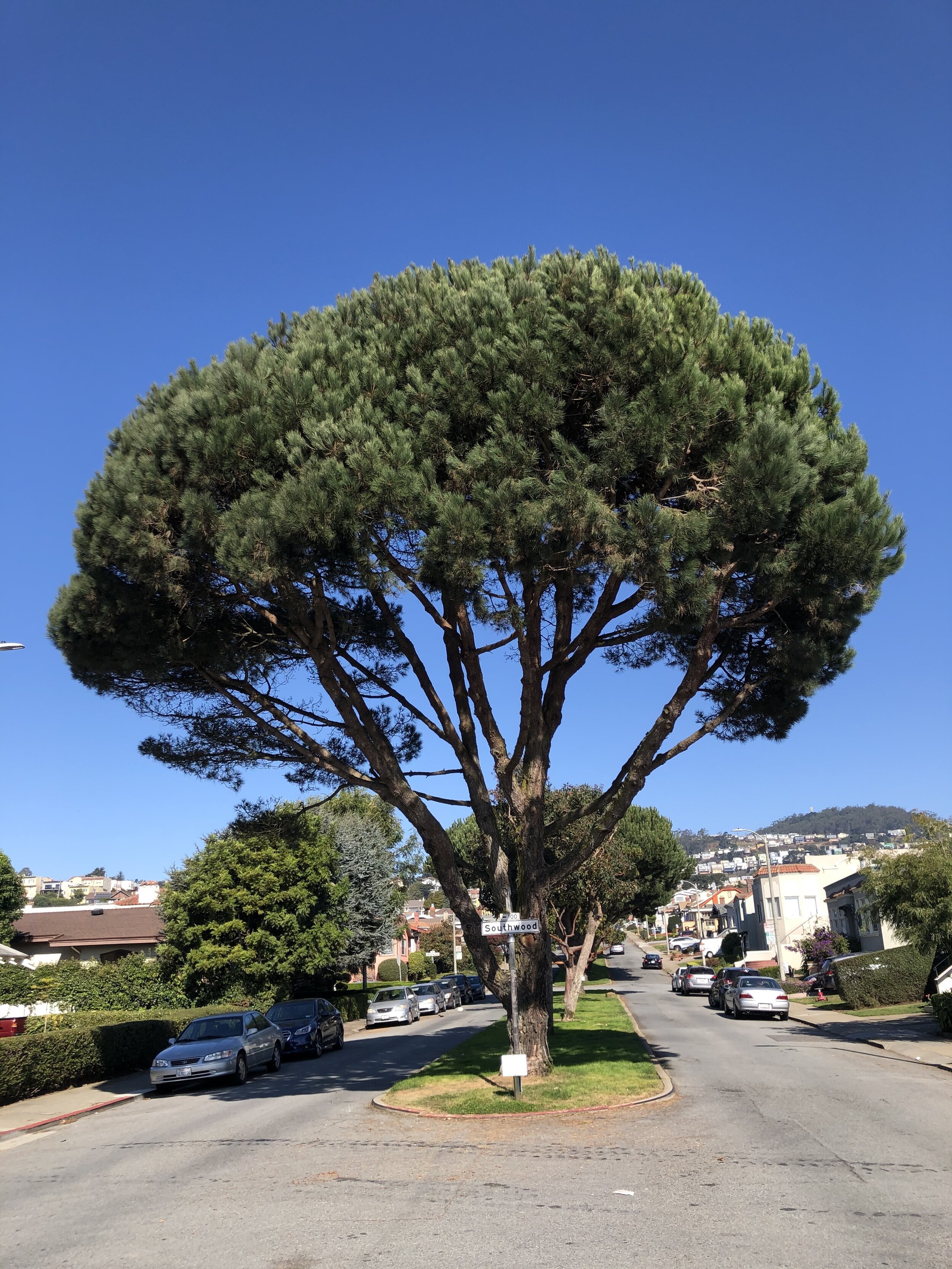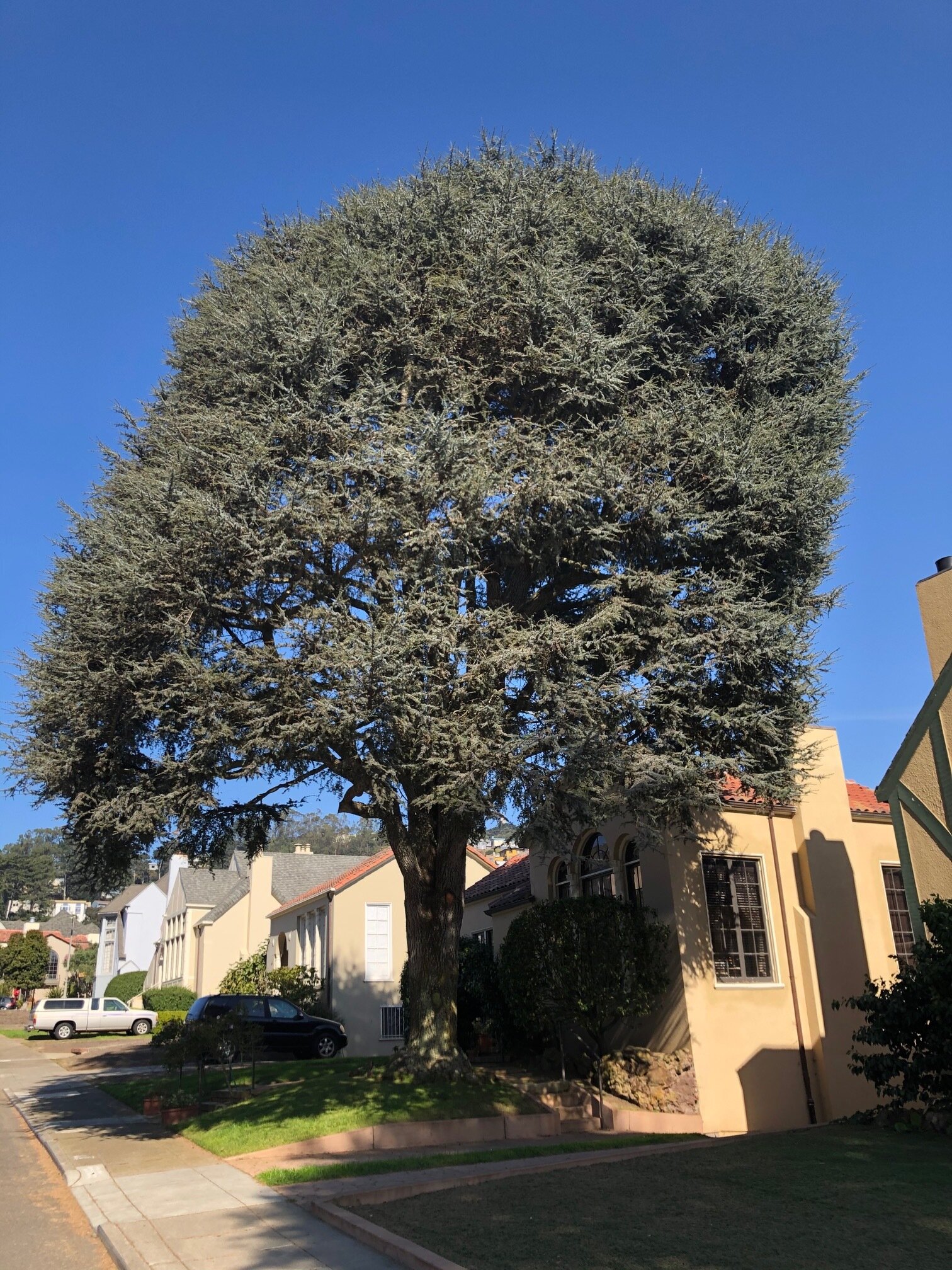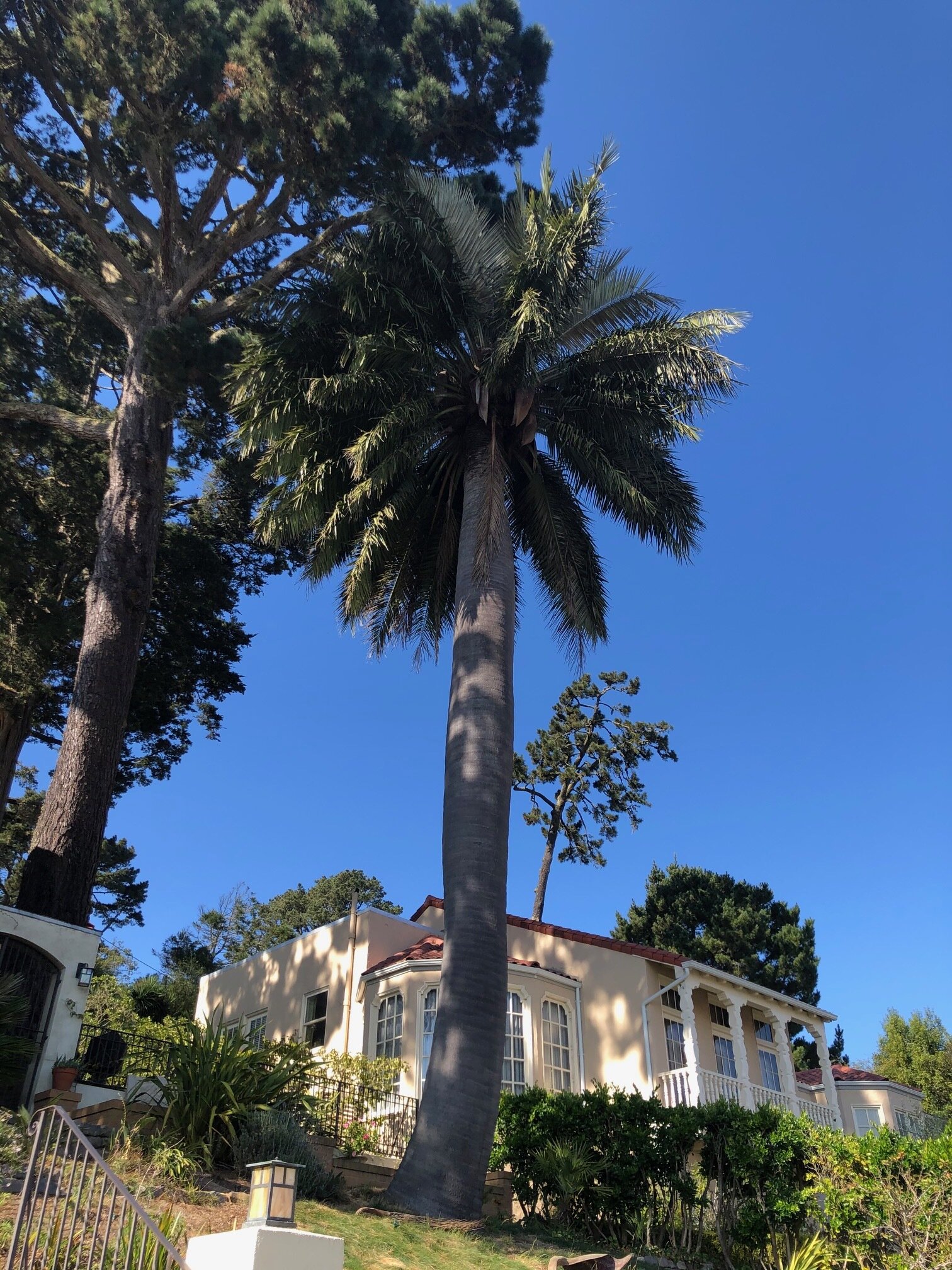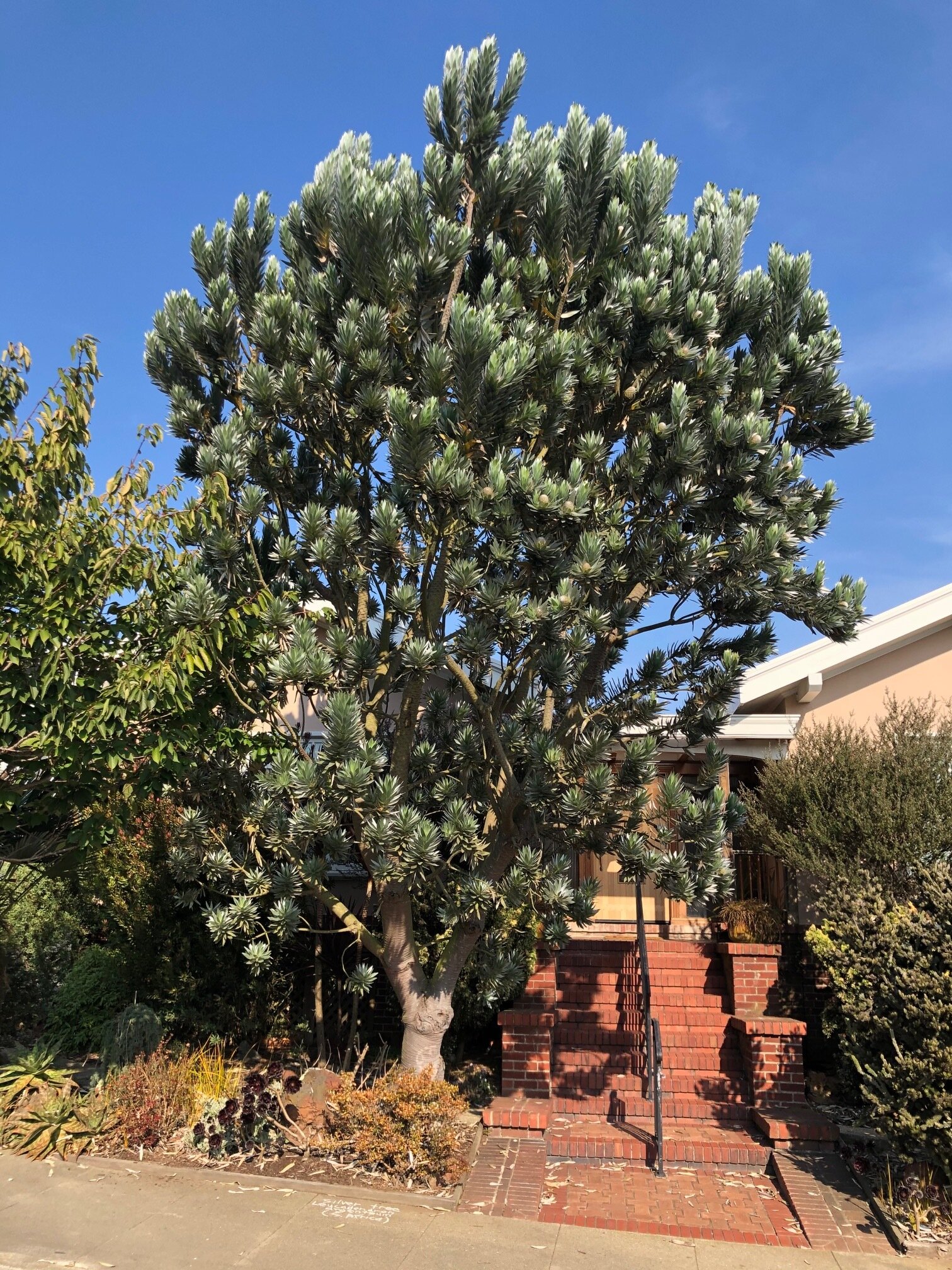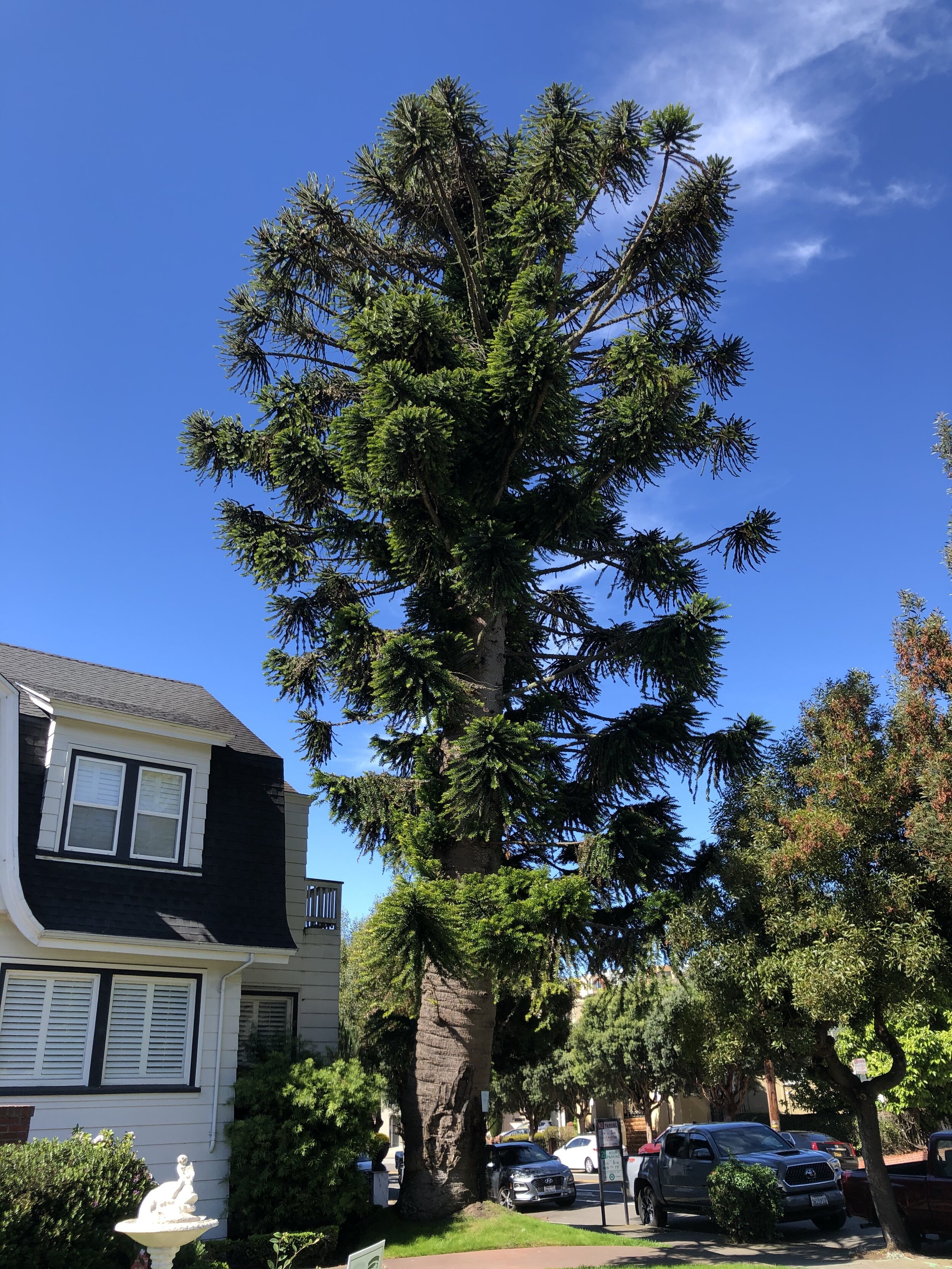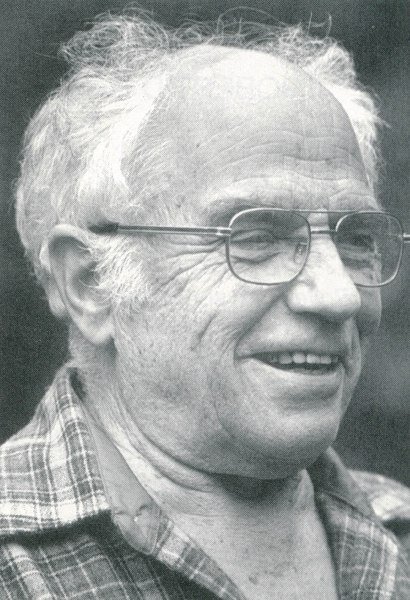The 1967 Annual Award of the California Horticultural Society “for outstanding and meritorious contribution to horticulture in California” was presented to Victor Reiter, Jr. at the Society’s annual dinner. Following established custom, a brief outline of the award recipient’s background is published in the Journal. [NOTE: here’s an excerpt from a UC Berkeley 1989 oral history of F. Owen Pierce, indicating that Reiter wrote the history below himself: “When Roy Hudson was made the director of Strybing Arboretum we had just had an article in the Journal about Vic Reiter. Vic had been given the annual award from Cal Hort, and Vic wanted to write up his own account of his life. He had put a lot of thought into it, and he'd rather do it right himself than have anybody else do it wrong, [laughing] Roy, I think, was envious of that, so when he became the director of the Strybing he brought in a long article by himself telling his life story.”]
FROM RUBBLE TO RUBUS - VICTOR REITER, JR.
Victor Reiter, Jr. was born at 1318 O’Farrell Street, in San Francisco, on April 26, 1903. His parents were of Luxembourger ancestry, paternally (Victor Reiter, Sr.) and of California native French, maternally (Augusta Pagès). All of his sixty-five years have been spent in San Francisco, except for a three year defection to the city of Oakland in 1912, and for six months in the remote wilds of Orinda “Park’ in 1908.
His first horticultural interests appeared, in 1909, at 1455 Sacramento Street, where a small backyard plot was assigned to “Bebe.” Here he grew marijuana from a canary bird seed mixture and sunflowers from parrot seed. This was augmented with a white polyanthus rose, four o’clocks (Mirabilis), Cestrum aurantiacum, mignonette, and apricot seedlings, all of which he had gleaned from the surrounding rubble-filled lots which remained after the 1906 fire and earthquake. He also possessed a potato plant grown from peelings and a clump of Swiss chard which the Italian maid “Rose” had brought from her relatives on Telegraph Hill. A “Big Boy”, about nine years old, recently arrived from the country, told him that farmers grafted fruit trees. This so intrigued “Bebe” that he took tips from his apricot seedlings and tied them into stems of the husky milkweeds that abounded in the area. The results of this effort, which had been insufficiently researched, survived for three long days – foggy ones.
During the school years that followed, interest in plants lay almost fallow. In 191 he did grow a vegetable garden of red lettuce and white carrots in an old plasterer’s mortar box, but no real horticultural interest developed until after his graduation from the University of California in his twenty-third year (1926).
Serious interest in plants started when the Reiters built a home at 1195 Stanyan Street in 1926. Here Victor Reiter, Sr. (a retired hotel-man) enthusiastically began growing roses in the relatively small back garden. The land was good and the roses prospered. Victor, Sr. and Jr. were convinced that the rose was the ultimate in flowering plants. They favored the smaller, more single kinds and, through hybridizing, Victor Sr. produced a Rosa abyssinica X R. ‘Cecile Brunner’ F3 hybrid, which he named Dr. Gallwey Improved. This is an extraordinarily vigorous non-remontant white climber, worthy of landscape planting today.
During those early rose years three things happened to influence Victor’s development. The Reiters acquired an adjacent acre of Sutro Forest, and Victor, Jr. met Lewis Allen and Eric Walther, both of Golden Gate Park. There had always been relationships with John McLaren and the Park; “Uncle John” had actually intimated that there might be room in the Park for Victor, Jr. However, the wonders of horticulture, botany and all its allied facets had never coalesced into a meaningful whole until the warm friendship of Lewis Allen and Eric Walther supplied the leaven.
Lewis Allen was assistant to Peter Rock and, later, manager of the nursery in Golden Gate Park. Allen was an avid collector, with a fabulous collection of rock-garden plants at his Sunset District home. As an expert grower, he had been responsible for the germination of the seeds gathered by various plant collecting expeditions to which the park subscribed. The nursery was literally groaning with thousands of new plants, of which surplus seedlings were available. Every Sunday afternoon Eric and Victor visited Lewis Allen’s garden and Victor listened as these two dedicated men shared their vast knowledge with their young disciple.
The avalanche of new plants, new names and new outlooks called for rethinking, reappraisal and study. The Journals of the Royal Horticultural Society, the Gardener’s Chronicle and Bailey’s Cyclopedia were devoured. Then, Eric introduced Victor to Alice Eastwood at the California Academy of Sciences, which had a treasury of botanical books. Another avalanche of knowledge ensued.
Simultaneously, Victor had started a mini-modest, one-man nursery, on the Sutro Forest land, which he named “La Rochette.” The treasures that had been acquired from Lewis Allen, from the Park and by direct purchase were multiplied, and seeds from Switzerland, Germany, New Zealand, Tasmania, South Africa and Mexico were germinated. Later, importations of plants were made from abroad notably from England, Ireland and France. New alpines, dwarf conifers, fuchsias and other shrubs came from the British Isles; gazanias, watsonias, and succulents from the Cape; shrubs and alpines from New Zealand and Tasmania; geraniums from France; echeverias, fuchsias, hawthorns, montanoas from Mexico; Fuchsia triphylla from Santo Domingo; aeoniums, echiums, statice, from the Canaries; armerias, alpines and bulbs from Morocco; helleborus and cyclamen from Majorca; even rose seeds from the USSR. In addition, plants were received from the USDA, Brooklyn Botanic Garden Pierre S. du Pont’s Longwood Garden, et. A. Lester Rowntree supplied native California seeds and even the aging Carl Purdy of Ukiah brought plants to swell the collections on Stanyan Street. Plants from the University of California Botanic Garden were also available, supplying new “loot” from South America. A glorious glut of plants was being accumulated.
In addition, there was Eric Walther’s formidable knowledge and the pre-Strybing Arboretum collection of plants at the Water Works in the Park, from which Victor had the privilege of getting cuttings. Items such as the first of the Magnolia campbelli clones came from there. Many of these items were difficult to multiply vegetatively, so Victor had to improve his propagating and his grafting skills far beyond those he had employed on the apricots in 1909. He built the first GE electric cold frames in San Francisco and early readers of this Journal may remember his article on the use of auxin-like substances to stimulate the rootings of cuttings.[1]
In addition to Eric’s Park responsibilities as entomologist, botanist, plantsman and arboretum developer, he had an avocation – an interest in succulent plants. This brought another world into the picture in the person of Charles Abraham, of the Western Nursery. At Eric’s suggestion, Victor visited the then very old “Charlie.” In the decaying, neglected old nursery on Lombard Street lurked many hidden beauties. The old man, recognizing the eagerness of his young visitor, uncovered his most precious items. For a token price of five dollars Victor left the Western Nursery with a gardener’s ransom.
James West had discovered succulents at Abraham’s nursery, where he probably also discovered Eric. Walther and West became active in the budding Cactus and Succulent Society of America, which headquartered in Los Angeles, and Victor tagged along. Within two years, La Rochette had accumulated hundreds of succulents and was producing new named clones of hybrid echeverias. The nursery trade still propagates some of these.[2]
Other succulents, particularly species of Rochea, were intercrossed in the hope of producing an earlier flowering Rochea coccinea type suitable for florist production on the California seacoast but, in the midst of all this succulent endeavor, the first tragedy struck – the Big Freeze of December, 1932 swept across California, obliterating all the outdoor breeding stocks of all the tender plants in the nursery, including most succulents. La Rochette never fully recovered from the Big Freeze in its tender plant department. The discouragement of losing years of collecting and breeding work in a single week is not conductive to repeat performances.
Members of the California Horticultural Society will remember that it was this same 1932 freeze that started the Society with a meeting of discouraged Bay Area gardeners in 1933. The story of the California Horticultural Society has already been recorded in these pages.[3]
This meeting started a new chapter for Victor Reiter, Jr. Dr. Sydney B. Mitchell, Dean of the Library School at the University of California, in Berkeley, and certainly the dean of California gardeners, became the Society’s first president. He was a learned gardener, author of western garden books and a famous Iris breeder, but, above all, he was an understanding mentor for aspiring horticulturists. At their Woodmont Avenue home in Berkeley, Dr. Mitchell and his wife, Rose created an informal atmosphere in which sophisticated gardening was a matter of course. He could gently place the yoke of logic over a disorganized young gardener’s thinking without generating discouragement. Again Victor was being faced with the need for reappraisal. Just as he had been inspired by the rare plant cult of Eric Walther, Lewis Allen and James West, he became equally fired by the plant quality and plant adaptability cult of Dr. Mitchell. No longer would “the plant be the thing” but, hereafter, “the best suitable plant would be the thing.”
Mediterranean plants were Dr. Mitchell’s major interests after the Big Freeze and Victor, having lost so much in 1932, was equally enthusiastic about the climatically suitable plants of Southern Europe. La Rochette featured species of Cistus, Helianthemum, Halimium, lavenders, and the multicolored Mitchell hybrid brooms. This was Victor’s Mediterranean period, when he introduced, among others, Helleborus corsicus Putoria calabrica, Aphyllanthes monspeliensis and the hybrid broom ‘Geoffrey Skipwith,’ which Eric later featured so successfully at the Strybing Arboretum.
Concurrently, La Rochette became very active in breeding fuchsias. The newly formed American Fuchsia Society, with Dr. E. O. Essig, Alice Eastwood Dr. Mitchell, Mrs. W. H. Ware and later, Gustave Neiderhollzer, had revived grandmothers’ vogue for fuchsias. This genus was so obviously suited to the coastal areas of California and had been so neglected that its potential was obvious. La Rochette acquired a large collection and imported new European fuchsias but, with the concept of “plant quality” inspired by Dr. Mitchell, the nursery became exceedingly select in its offerings. This was followed by years of fuchsia breeding in an attempt to improve the size, quality and color range of garden fuchsias. Readers of the Journal will remember Victor’s article on the history of fuchsia breeding[4], as well as notes on fuchsia culture[5].
Victor Reiter, Sr. was very active in the early fuchsia breeding work, an ideal father and son enterprise. Victor, Sr. would do the hybridizing and Victor Jr. would grow the seedlings to maturity – thousands of them . The story of the quest for the all-double-white fuchsia has already been recorded in the Journal.[6]
The Reiters amassed a huge collection of species of Fuchsia in the hope of improving the garden varieties by introducing new characters into the garden strains. This proved disappointing but they did introduce one fine hybrid, ‘Fanfare.’ In later years, Victor, Jr. also introduced ‘Mantilla,’ a trailing Fuchsia triphylla X F. ‘San Francisco’ hybrid. Victor continued the fuchsia work after his father’s passing, making annual offerings of new introductions which were critically praised or criticized by an enthusiastic fuchsia public.
In the midst of all this activity, the second great tragedy struck – World War II. Victor, Jr., like his friend William E. Schmidt [7], went into war work. Although over age, he felt it difficult not to take part in the effort. He wound up in charge of woodworking in the development laboratory at Hendy Iron Works, in Sunnyvale. Toward the end of the war, he had reached a crossroads – to decide whether to follow his esteemed superior, A. M. Poniatoff, into the budding Ampex Corporation or to return to La Rochette.
Return he did, with enthusiasm. During these post-war years the nursery renewed its breeding work, and continued to increase its rock-garden and succulent collections until the sales catalog of non-succulent ground covers and rock plants swelled to over five hundred kinds of plants. In addition, there were dwarf conifers and several hundred succulents, shrubs, vines and the extensive fuchsia operation.
Practically all saleable nursery stock was grown on the premises, much of it unobtainable from other sources. This gained a reputation for La Rochette as a nurseryman’s nursery, a supplier of novelties. There was a constant flow of visiting professionals who were eager to acquire and to share their rarities and experiences with tiny La Rochette.
It was an established custom never to charge botanists, plant breeders institutions, colleges or parks for new or rare plants. In the case of Eric Walther and the Strybing Arboretum, plants were not only given to the Park but they were supplied for exchanges between Strybing and other institutions.
Out of town visitors to the Arboretum could purchase some of the rare items seen there, from La Rochette. This brought many world contacts to the nursery. Sales of this sort were seldom consummated, usually ending, rather in an outright gift or exchange arrangement.
About one-third of the nursery was devoted to display collections, testing and breeding projects, all of which were time-consuming. To this was added the constant flow of horticultural personalities with whom Victor was delighted to share his time. Plant information was supplied to newspapers, magazines, horticultural writers and home gardeners, all of whom seemed to phone at any hour of the day or night, or on holidays of any denomination.
The combination of a research operation, a collector’s enthusiasm and the hard realities that business imposed was something practically impossible to accomplish then and totally impossible to achieve today. Only with the drive of youth and the fanatical dedication of the entire La Rochette entourage was the tiny enterprise barely able to survive. Profits had never, at best, been more than miniscule and the mounting costs of doing business, coupled with the declining public interest in high-maintenance gardens, made its final demise inevitable. The aging owner found himself following the same road that Charles Abraham had followed in an earlier generation. Charlie had seen his Western Nursery crumble with the changing times and Victor was also seeing his La Rochette becoming a similar anachronism.
Arthur Menzies had left the nursery and returned to the Park and the Strybing Arboretum. Victor’s devoted helper, Frank Sacaze, could no longer carry on. Eric Walther had retired from the Park but he still visited the nursery every Saturday morning to see his precious echeverias which Victor maintained in one of the greenhouses. Realizing that his hours were numbered, Eric was frantically working to complete a monograph of Echeveria which, unfortunately, was still incomplete when the end came, in 1959. The California Academy of Sciences is now editing his monograph.
La Rochette had seen its days of glory – the gate was closed and the blackberries slowly reclaimed the Sutro Forest acre for its own.
_____________________
Victor Reiter, Jr. continues to garden in a more restricted way but the acquisitive zeal of the plant lover and the hybridizer’s enthusiasm survives. The now Honorary President still finds in the California Horticultural Society a bridge to the younger generation and the future He sees great promise for the rising generation of institutional horticulturists, who, he hopes, will be protected from the whimsical fluctuations and demands of the marketplace by the substitution of long range government support.
[1] All footnote references are to articles in the California Horticultural Society Journal. Notes on Plant-Growth Substances (Reiter) Vol. I: 71
[2] Echeveria Hybrids (Walther) Vol. XX: 60
[3] The First Thirty-One Years (Reiter) Vol. XXV: 90
[4] Notes on the History of Fuchsia Breeding (Reiter) Vol. V: 144; Vol. VI: 182
[5] The Outdoor Culture of Fuchsia in Coastal California (Reiter) Vol. II: 1
[6] Notes on the History of Fuchsia Breeding III (Reiter) Vol. XXVIII: 161
[7] Annual Award: William E. Schmidt (Reiter) Vol. XXVIII: 161

















































